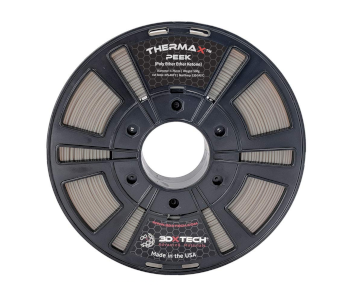Tips for 3D Printing on Glass: How to Do It
While most desktop 3D printers don’t come with glass beds by default, a glass print bed is one of the first upgrades that 3D printing hobbyists and professionals make. A glass bed just makes a 3D printer feel more premium and professional. When used right, a glass bed will give you results that will reflect this impression quite accurately.
Before you go to a hardware store and buy a piece of glass for your print bed, make sure to read through our list of tips first. A glass bed isn’t a silver bullet for solving all your 3D printing woes – it has to be used according to a few guidelines.
What are the advantages of using a glass print bed?
A glass bed is practically a no-brainer addition to anyone’s 3D printing accessories. However, if you still aren’t convinced that converting to a glass bed is worth the bother and the expenses, then are a few points which may make you change your mind:
1. Consistently flat

Despite appearances, the build plate that comes with your 3D printer is probably not 100% flat. If it’s made of thin aluminum, then there are probably sections of it that bow down even when brand new. These deformations will worsen as you use your 3D printer, which will soon enough cause problems with bed adhesion.
Compared to aluminum, glass has a much higher modulus of elasticity. What this means is that it has less of tendency to deform under stress, whether mechanical or thermal. A glass bed will be flat when you buy it and will remain flat even after hundred of heating and cooling cycles. A high-quality tempered glass bed even has good scratch resistance, so its quality will not deteriorate even if you use a scraper or razor to remove residual adhesives.
2. Easier to clean
The clarity and chemical stability of a glass bed makes cleanup a breeze. After printing, your bed will likely end up with a lot of excess adhesive. Even while stored and during handling, the bed can pick up dust and oils that can severely compromise the quality of bed adhesion. Since glass does not corrode, you can safely clean it with some soap and water or even a quick wipe down with acetone. It’s also very easy to spot any dirt you’ve missed with glass – a task that’s a lot harder with an aluminum bed that’s been painted black.
3. Prints remove cleanly
By its very nature, the surface of a glass is very smooth. This smoothness transfers to the bottom of your print, making sure that they come out with very clean and flat bottom surfaces. When done right, removing your finished print from a bed should also be nearly effortless. With the struggle of removing your print eliminated, you can be sure to preserve the quality produced by several arduous hours of printing.
4. More controlled behavior when heated
Glass has two properties that make it an excellent material for a heated bed: a low thermal conductivity and a high thermal shock resistance. A low thermal conductivity means that a glass bed heats slowly and evenly. As long as you’re patient while your glass bed heats up, you should end up with a bed that with a consistent temperature all throughout. Better yet, the temperature of a glass heated bed doesn’t drop drastically because of drafts or changes in the temperature of the environment.
The second property is more important for giving glass beds longevity. When a glass bed is used on a heated build platform, its temperature increases quite rapidly. When the molten filament comes in contact with the glass bed, there could be more than 100 °C between the two, which can be quite the thermal shock for the glass material.
What makes glass an excellent choice for a heated bed is that it has a greater capacity for withstanding sudden changes in temperature. Not all types of glass are created equally in this aspect. You need to pick the right type of glass if you want the optimum thermal shock resistance, as we shall discuss in further detail later.
5. Inexpensive
A glass bed may seem like a fancy addition to your 3D printer assembly, but it’s really not that expensive. You likely won’t need a huge piece of glass, especially if you just have a desktop-scale 3D printer. The price can depend on the size of your print bed, but you shouldn’t have to spend more than $30 even for a very large piece of glass.
In the long term, making the switch to a glass bed can even end up saving you money. Your prints will have better bed adhesion and will come off easier, resulting in less filament wasted due to failed prints. A glass bed will last a very long time and you won’t need to worry about replacing it frequently, like PEI or BuildTak surfaces.
Tips to get the best results when printing on glass
Getting a glass bed is no guarantee that your prints will come out perfectly every time. Not all glass panels are made equally and there are still proper techniques that you need to follow. To make the most out of a glass bed, make sure to follow these tips:
1. Use glass that is about 3 to 4 millimeters thick
Bring your caliper with you when you go shopping for a glass panel to make sure that the thickness falls somewhere within this range. This value is a good compromise that makes sure that your glass bed is durable enough to withstand the thermal shock but not so thick that it heats up too slowly.
An exception to this rule of thumb would be if your print bed is exceptionally large. You’ll have to get a thicker glass bed (close to 6 millimeters in thickness) to make up for the added stress on the glass due to its own weight.
2. Make sure you buy borosilicate glass
The cheapest glass you can find is the soda-lime silicate variety. It’s cheap because it may contain entrapped air bubbles which may end up expanding when heated and creating cracks on the glass. Phosphate-based glass also has the same vulnerability on top of a low chemical resistance, which means that you can’t clean it with the usual solvents.
For the most reliable option, we recommend going only with borosilicate glass. This is the same glass used in cookware or the glassware used in laboratories. They are chemically resistant, have no air bubbles, and are manufactured to be consistently flat and smooth. There’s really no other option when it comes to this aspect.
3. Use tempered glass or ceramic glass, if possible

There are only two ways to do better than borosilicate glass – tempered glass or ceramic glass. Both these options might be more expensive, but they offer advantages which could prove useful for glass print beds.
Tempered glass is simply glass that has been treated to give it better thermal stability. This means that they can be heated to higher temperatures with no ill effects. Most tempered glass can be heated to around 240 °C. If you plan to print with extremely high-temperature filament such as PEEK or ULTEM, then you may need to get a tempered glass bed.
Ceramic glass, the most popular brands of which is NeoCeram, actually isn’t glass – its composition is closer to a transparent ceramic. Unlike real glass, ceramic glass can go through repeated heating and cooling cycles without losing any of its mechanical integrity. For this reason, ceramic glass is often found in glass covers of stoves and fireplaces.
As a print bed, ceramic glass will last much longer. If you use your 3D printer at a very high output rate, you should consider investing in ceramic glass.
4. Use binder clips to affix the glass bed to your platform
Once you have your glass bed perfectly cut to the size of your build platform, affixing it to your 3D printer is a job for the humble binder clips. This is a widely used practice by the 3D printing community that manages to hold the glass panel in place while still allowing it to be removed without a fuss. Make sure to use small binder clips that will stretch out almost fully to accommodate the thickness of your print bed. This will ensure that the binder clips will not come into contact with any of the parts of your 3D printer.
5. Try to use glue stick for adhesion
Glue stick is the go-to adhesive of the 3D printing community. It’s often the first option because of how cheap it is and how easy it is to apply. You can even rub some glue stick on your glass bed even when it’s already mounted on your 3D printer.
The advantage of using glue stick on glass is that you can simply wash off the excess glue with water when you’re done printing. Glue does tend to make print removal difficult, especially if you set the bed temperature at high values. However, you can use the same technique of running the glass bed under water for a few second to loosen the glue after the print has cooled down.
6. If glue stick doesn’t work, try hairspray
Hairspray is another favorite adhesion aid among the community because how easily you can get it and how reliably it performs. Unlike glue stick, applying hairspray can get a bit messy, so it’s best to remove your glass bed from your 3D printer and apply the hairspray a good distance away. The spray application method should make it easier to get a nice, even coat. Let it dry for a few minutes before you install the glass bed.
As the glass bed heats up, the adhesive power of the hairspray reactivates and provides excellent bed adhesion. When you’re done printing and the glass bed starts to cool down again, the hairspray reverts to its dried state.
If you’re lucky, your finished print should come right off the glass bed when it’s cool enough without any prodding. Even if it doesn’t come off by itself, removing a print from hairspray adhesive should still be easier than if you used glue stick.
7. Make sure your glass bed is completely dry before you use it
We recommend cleaning your glass bed after every use with water and soap. What’s even more important is that you let it dry completely before you put it on your build platform. The most dangerous thing you can do is to let drops of moisture be trapped between the build platform and the glass bed. When the glass bed heats up, this moisture will turn to steam and will easily crack the glass.
Final thoughts
3D printing on a glass bed is a luxury that gives you better options in bed adhesion and results in overall better quality of your finished prints. Thankfully, you don’t need to spend a lot of money to get one. Since a glass bed lasts for so long and should save you from a lot of wasted filament, it’s well worth the investment.
Just keep in mind that printing on glass won’t magically solve all the problems you’re encountering. Much like any other aspect of 3D printing, printing on glass requires technique and a deep understanding of the science behind its use. If you can harness the benefits of 3D printing in glass, you can open the possibilities of printing with more types of filaments.



I recently purchased a 3D printer which included a glass bed and was surprised that it came mounted with mere binder clips. Your article made me feel better about that. It also included a roll of wide-width masking tape which surprised me as I expected it would be best to use glue sticks or hairspray. Do you have any experience with using masking tape on a glass surface? Does it somehow “defeat the purpose” to do so?
can you print glass itself? thanks.